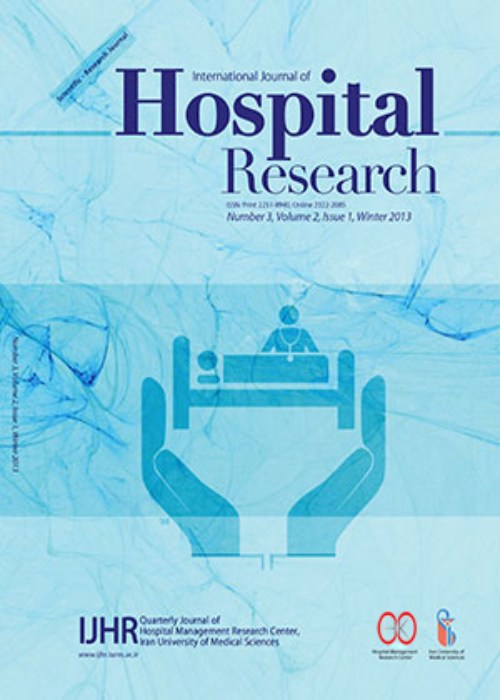Relationship between Leadership Behavior, Quality of Work Life and Human Resources Productivity: Data from Iran
Author(s):
Abstract:
Background And Objectives
Quality of work life is an increasingly important organizational factor in health facilities. Most studies on quality of work life in hospitals have been conducted in developed countries. The few studies performed in developing countries have targeted low- and middle-performance hospitals, and they have not explored the relationship between quality of work life and other organizational factors. The purpose of this study was to gain insight on how Quality of Work Life (QWL), Leadership Behavior (LB), and Human Resources Productivity (HRP) would be inter-related in the high-performance hospitals in developing countries.Methods
A cross-sectional study was carried out over the period of July to September 2011 in Hasheminejad Kidney Center, which is one of the largest Urology hospitals in Iran. Two scales were developed for measuring LB and QWL based on the literature review, and HRP was measured using a simple questionnaire with single-item questions for each dimension. The scales were distributed to 403 healthcare employees and 316 valid questionnaires were returned. The data was analyzed using exploratory factor analysis to examine the similarity of the factor structure between scales and collected data. An iterative model improvement procedure was adopted for improving the LB and QWL measurement models, and the final models were validated against the collected data using confirmatory factor analysis. The reliability of scales and dimensions was determined by calculating Chronbach’s alpha. Correlation analysis was carried out to examine construct validity, and the relationship between constructs was studied by regression analysis.Findings
(1) Employees had high positive perceptions of the LB (73%), QWL (70%) and HRP outcome variables (78%); (2) LB was positively correlated with QWL (β = 0.78, P < 0.001) and HRP (β = 0.74, P < 0.001); (3) QWL was positively correlated with HRP (β = 0.68, P < 0.001). All individual dimensions of LB were found positively and significant correlated with QWL.Conclusions
Our Results indicate that satisfactory levels of QWL are achievable in hospitals of developing countries. In addition, higher employee perception of QWL was found to correspond with higher employee perception of LB. Leadership style, treating subordinates with trust and respect, motivating and in-person recognition of subordinates, and promoting organizational values were identified as strong predictors of QWL and HRP.Keywords:
Quality of Work , life , Personal Satisfaction , Well , being , Leadership , Behavior , Human Resources , Productivity , Hospital , Workplace , Organizational Health
Language:
English
Published:
International Journal of Hospital Research, Volume:1 Issue: 1, Autumn 2012
Page:
1
magiran.com/p1082323
دانلود و مطالعه متن این مقاله با یکی از روشهای زیر امکان پذیر است:
اشتراک شخصی
با عضویت و پرداخت آنلاین حق اشتراک یکساله به مبلغ 1,390,000ريال میتوانید 70 عنوان مطلب دانلود کنید!
اشتراک سازمانی
به کتابخانه دانشگاه یا محل کار خود پیشنهاد کنید تا اشتراک سازمانی این پایگاه را برای دسترسی نامحدود همه کاربران به متن مطالب تهیه نمایند!
توجه!
- حق عضویت دریافتی صرف حمایت از نشریات عضو و نگهداری، تکمیل و توسعه مگیران میشود.
- پرداخت حق اشتراک و دانلود مقالات اجازه بازنشر آن در سایر رسانههای چاپی و دیجیتال را به کاربر نمیدهد.
In order to view content subscription is required
Personal subscription
Subscribe magiran.com for 70 € euros via PayPal and download 70 articles during a year.
Organization subscription
Please contact us to subscribe your university or library for unlimited access!


